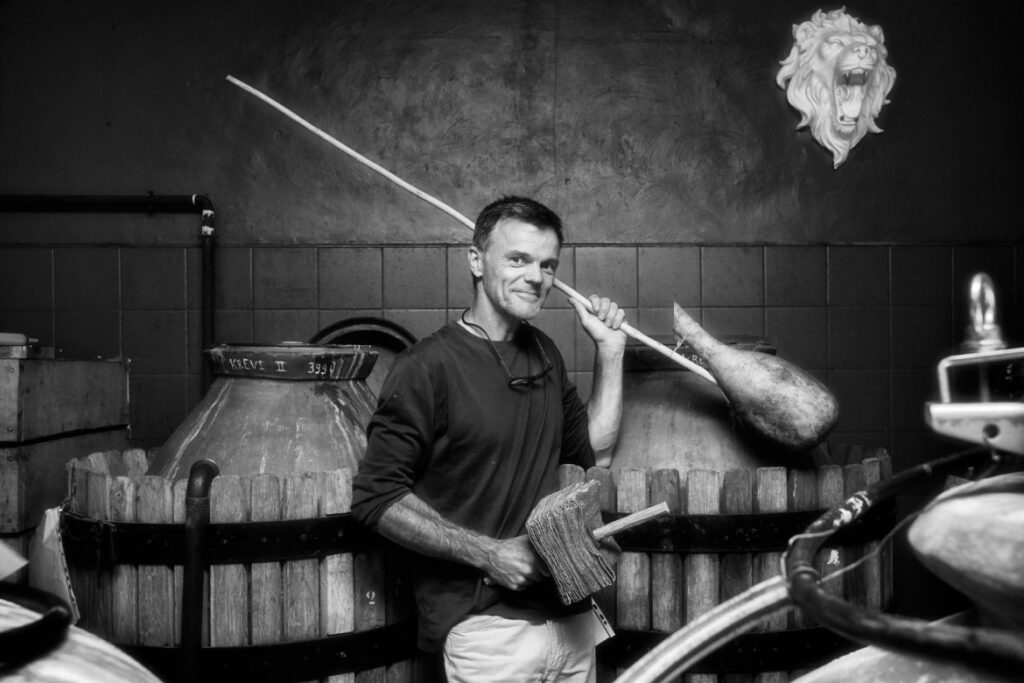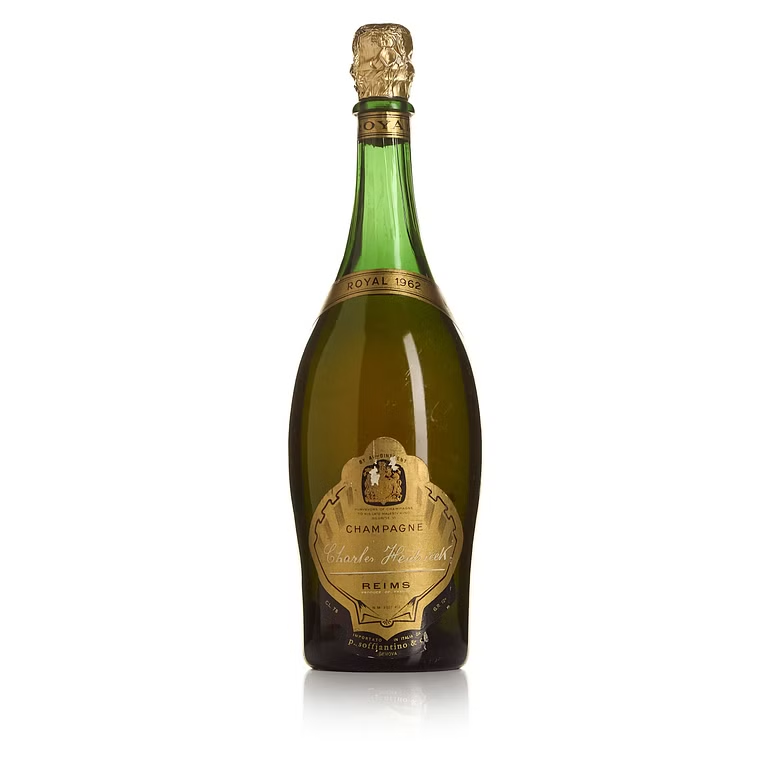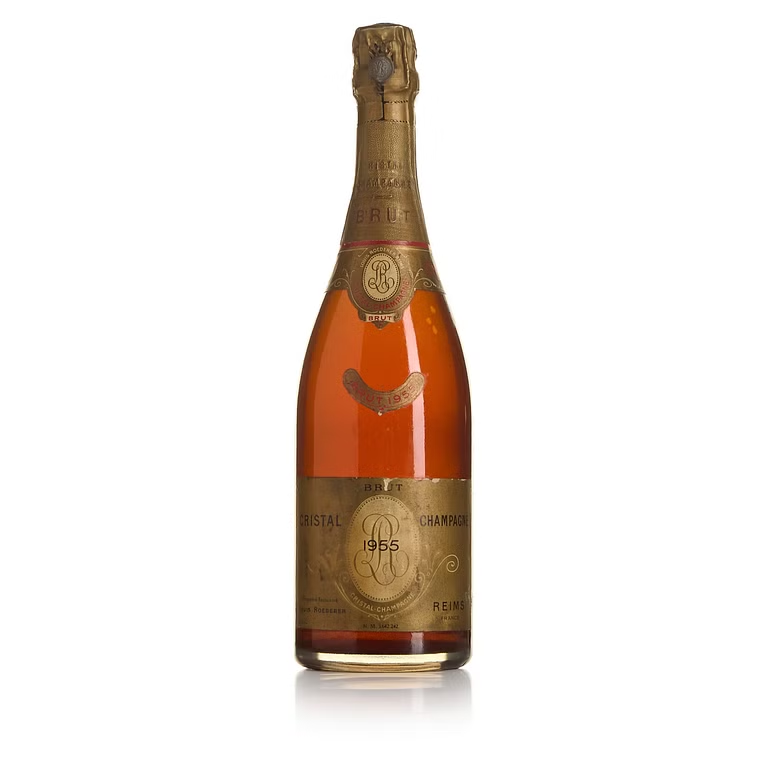TheChampagneSommelier visited the Augustins in Avenay-Val-d’Or last week. [ read the full champagne story ]
Estimated reading time: 6 minutes

A Manifesto on Transcendence, Delivered for Champagne Club
One spends a lifetime wading through the glorious, yet often predictable, excess of Champagne. You see the polished cellars, hear the earnest speeches about terroir, and taste the familiar, comforting brilliance of Pinot and Chardonnay. And then, there is Marc Augustin.
Marc Augustin, with his equally fascinating wife, Emmanuelle, is not merely a grower. He is a visionary, a provocateur, and quite possibly, a lunatic genius—which, as we know, is the only kind of genius worth paying attention to. To call what he does “biodynamics” is to call a Rolls-Royce “a means of transportation.” It misses the point entirely.
This is not farming; it’s alchemy. It is coeurviculture—winemaking with a heart—a concept so poetically pretentious it should be mandatory2 If you are comfortable with your Champagne house using compost, cow horns, and lunar calendars, please, move along. Augustin requires a different spiritual investment. You must be prepared to entertain the possibility that your magnificent wine has been influenced by telepathy, numerology, and the gravitational pull of a carefully designed, womb-shaped barrel.
I. The Audacity of the Ancestral: A Family History of Not Conforming
The Augustins, rooted in Avenay-Val-d’Or—a Premier Cru village nestled in the Montagne de Reims—have an illustrious history of stubbornly refusing to follow the crowd. Marc’s great-grandmother, a true original, began producing her own Champagne when most growers were still bowing to the Négociants. Later, his father, Jean, possessed the foresight and sheer bloody-mindedness to reject pesticides entirely in the 70s. This was an act of quiet rebellion at a time when chemicals were the height of agricultural fashion5
Marc and Emmanuelle didn’t inherit pristine vineyards by chance; they inherited the right to be iconoclasts.Their switch to certified Biodynamics in the early 2010s was therefore not a market-driven pivot, but the inevitable culmination of a family trait: the sublime arrogance of knowing best.
II. Biodynamics as Performance Art: The Augustin Method
Most growers who dabble in Biodynamics rely on the standard Rudolf Steiner playbook: the famous preparations, the lunar cycle. Augustin takes this framework and shatters it, reassembling the pieces into a unique, dazzling mosaic that is equal parts farming and Kabbalah.
- The Elements as Cuvées: Their core philosophy centers around the Four Elements—Earth, Air, Fire, and Water—which Marc sees as the very foundation of life and wine. Each flagship cuvée is named after an element, reflecting the energy and character derived from its terroir and its unique vinification.
- Terre (Earth): Often aged in Georgian clay amphorae that literally rest in the dirt, grounding the wine in a profound minerality.
- Feu (Fire): An intense, often zero-sulfur Blanc de Noirs from old vines, symbolizing transformation and unpredictable intensity.
- Aire (Air): Often a Chardonnay of stunning finesse, utilizing Italian amphorae to express lightness, clarity, and the freedom of the upper atmosphere.
- The Feminine Imperative: In a masterstroke of bio-spiritual commitment, Augustin insists that the grapes be picked exclusively by women. This is done to “preserve fertile energy in the grapes,” a notion so deeply eccentric it becomes, quite frankly, inspiring. It is a celebration of fecundity, demanding a gentleness and intuition that Marc believes is crucial for the wine’s soul.
- The Cellar Alchemist: In the winery—a self-described “sanctuary”—Marc employs no filtering, no chaptalisation, and works with minimal sulphur. He uses vessels ranging from enameled vats (less “harsh” than stainless steel, naturally) to custom-made, cone-shaped barrels that he refers to as a womb for the nascent wine. Bottling is dictated by obscure tenets of chromatology and tidal coefficients, ensuring the wine’s molecules are at their most harmonious.
- The Gold Standard of Lunacy: And then, there is the detail that truly sets him apart: Marc has been known to introduce microscopic amounts of gold and silver into the soil to “reduce pollution.” He also reportedly uses a special copper device that forces the wine to pass through copper tracks based on Fibonacci numbers. If this sounds like the musings of a benevolent, wine-obsessed wizard, it’s because it is.
III. The Fantastic, Arrogant Charm of the Augustins
This dedication to the esoteric would be dismissed as charming madness if the wines weren’t so consistently and outrageously brilliant. This is where Marc Augustin’s personality moves from mere eccentric to utterly magnetic.
He is a man of fierce conviction, whose eyes sparkle with the kind of certainty that only comes from knowing you are operating on a higher spiritual and viticultural plane than your neighbours. He’s not seeking approval; he’s seeking harmony. And the best part? He is quick to admit that his extreme ideas are not for everyone, even within his own family. That honesty—that acknowledgment of the necessary friction between genius and common sense—is what makes him so engaging.
The Champagne Sommelier, you see, deals in terroir, but Marc Augustin deals in energy. He treats the vine as a living organism and the wine as a creation deserving of profound respect and affection. When you taste an Augustin cuvée, you don’t just taste Pinot Noir from Avenay; you taste the intention, the energy, and the utterly captivating madness of the man who guided it.

IV. The Verdict of the Sommelier
What, then, is the practical result of this bio-energetic coeurviculture?
The wines are, as expected, challenging, complex, and vibrant. They possess a dizzying array of aromas that often defy conventional description—a testament to the unfiltered nature and the holistic approach. They are not merely Champagnes; they are liquid expressions of a singular, intense philosophy. The ‘Feu’ Cuvée, for instance, is a rush of pure, dry power, where the lack of sulfur and dosage allows the Pinot Noir’s fruit and the chalk’s minerality to duel in a captivating, energetic struggle.
To open a bottle of Champagne Augustin is to signal that you are not content with mere bubbles. You are not satisfied with simple excellence. You demand a narrative, a philosophy, and a small, intriguing dose of the utterly fantastic.
I often seek the great vignerons who are guided by science and tradition. Marc Augustin is guided by his heart, his copper cones, and the moon. And in an industry that occasionally takes itself far too seriously, we need his magnificent, brilliant arrogance to remind us that the best wines are often made when one simply follows one’s own beautiful, unhinged vision.
‘You may now taste. And try, if you can, to appreciate the spiritual labour that went into your glass’.






